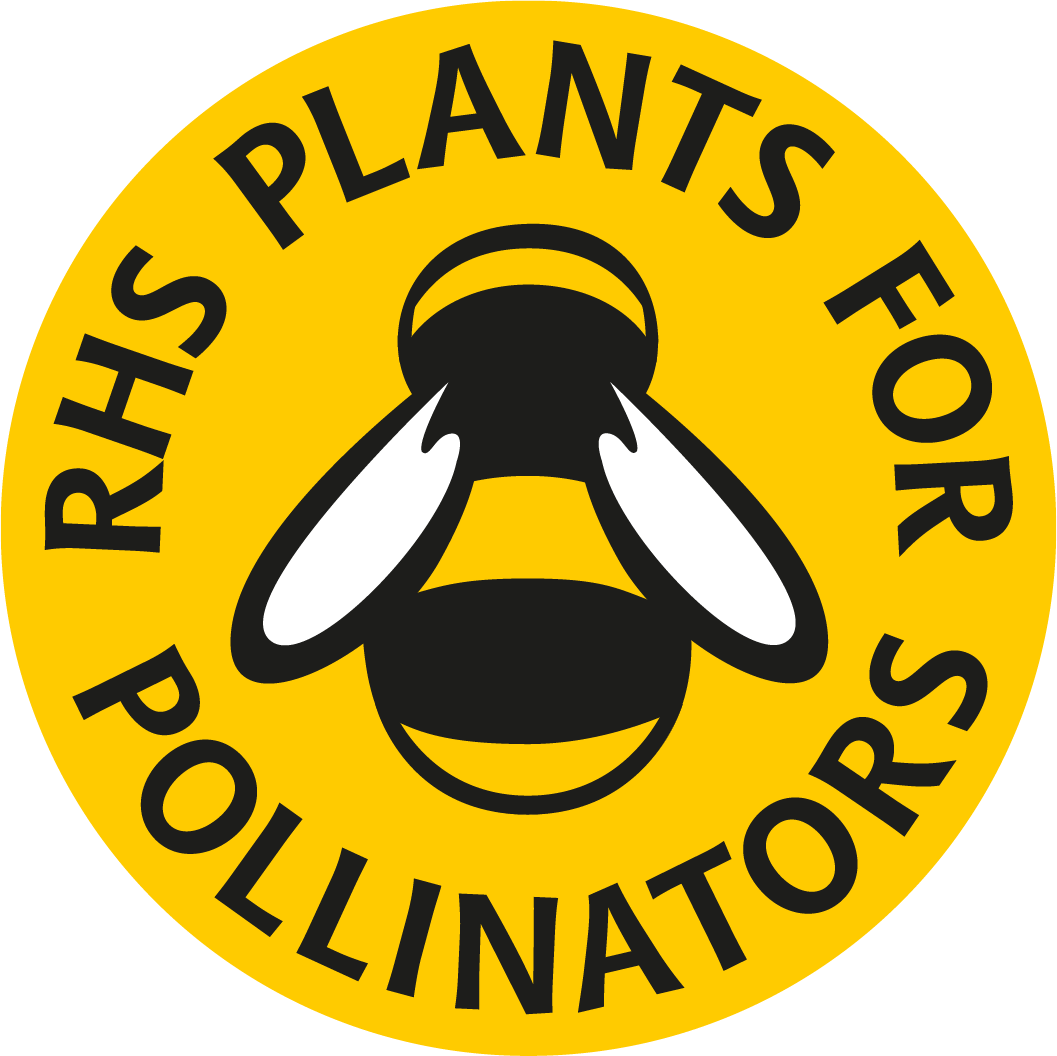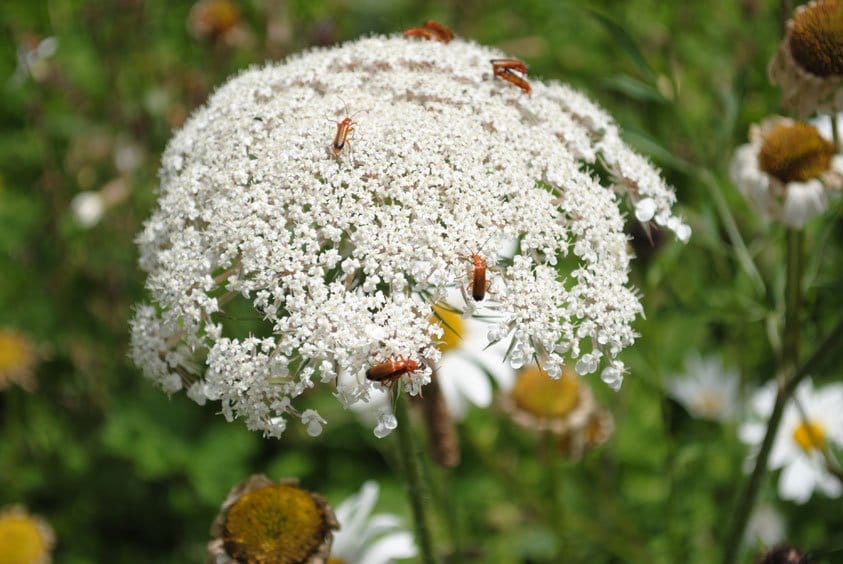
Wild Carrot
Wild Carrot is a biennial wildflower (taking two years to complete its lifecycle) which is also known as Queen Anne’s Lace, Bee’s Nest and Bird’s Nest. Although related to the culinary, orange carrot, the root of Wild Carrot is very different, being small, spindly and white. It has a strong smell and horrible taste! The plant has hairy stems, finely-divided leaves, and umbels of white flowers – the central flowers of each umbel being bright red or deep purple. Wild Carrot grows to a height 3 ft or so (90 cm) and flowers from July to September. Once flowering is over, it looks rather majestic with its skeletal outlines and almost birdnest-like flowerhead.

The word carrot is Celtic, meaning red. “Daucus” comes from the Greek “dais”, to burn, referring to its pungency and stimulating properties. The name “Bird’s Nest” comes from the plant’s resemblance to one when the seeds have ripened – the umbels then contract so that the head forms a hollow cup.
Where can Wild Carrot be found?
Wild Carrot is found a lot near the coast in Scotland and in grassland, meadows and wasteland.
Folklore Associated with Wild Carrot
In ancient Scotland, Wild Carrots were dug up in late September in honour of St Michael, patron saint of the sea. Wild Carrot was also symbolic of fertility. On the Sunday before St Michael’s Day, the women would dig up the carrots, singing special songs. They dug the plants up by removing soil in an equal-sided triangle, the plants were tied with red thread in bundles of three, and then presented to the men. The significance of three probably originated as symbolic of the three stages of a woman’s life – girl-mother-crone (the symbolism later shifted to represent Father, Son and Holy Ghost).
Wild Carrot as a herbal remedy
*This sheet is provided for information only and is in no way a prescription for use. Please seek the advice of a qualified herbalist before using, particuarly if pregnant or have health issues *
Wild Carrot seeds were once popular in folk medicine as a means of birth control, a sort of “morning-after” pill. This is because the plant has also been used to encourage menstruation and induce uterine contractions. Infusion of the plant has been used for dropsy, bladder and kidney problems. Seeds are also good for flatulence, colic, hiccups, cough and dysentery. Old herbalists recommended a poultice of the roots for the pain of cancerous ulcers. Leaves were mixed with honey and laid on the sores/ulcers. Other applications of the plant have been for cystitis, gout, oedema. Oil is used in anti-wrinkle creams. Native American Indians used to steep the flowers in warm water and drink the liquid for diabetes. The small, central coloured flower was believed to be good for treating epilepsy.
Ancient Greeks and Romans used the plant as an anti-venom treatment and in love potions. Fashionable ladies used to wear the lacy green leaves in the hair for decoration. Sheep, cattle and horses will graze the plant, but it will taint milk if cows eat a lot of it. The flowers produce a dye for clothes.
Wildlife value of Wild Carrot
Wild Carrot flowers are very popular with sulphur beetles, soldier beetles, flies, hoverflies and all sorts of other bugs. It is a food plant of caterpillars of the Swallowtail butterfly.



